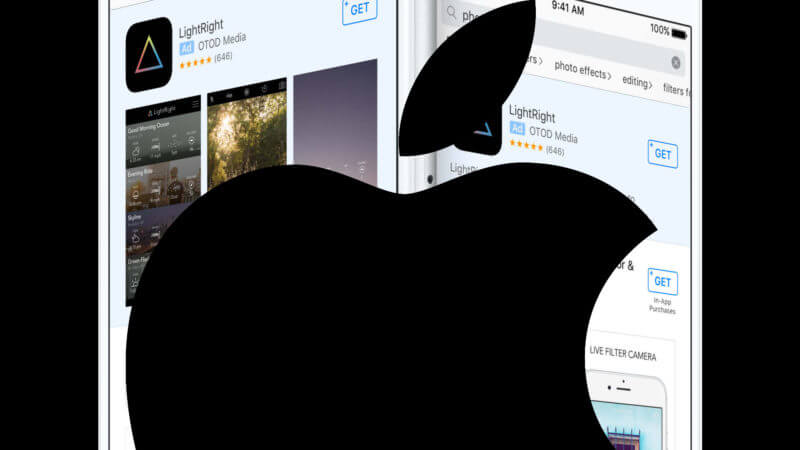
It’s been five months since Apple expanded their Apple Search Ads program to advertisers in three additional countries (UK, New Zealand and Australia). After its initial, US-only launch in October 2016, I was really excited to finally get to test out this brand-new platform when it finally launched in the UK.
Now that I’ve had some time to experiment with it, I’m going to discuss what I like, dislike and hope to see in the future across this new and exciting platform. I want to share my own experiences here in the hope that anyone looking to test some Apple Search Ads campaigns in the future can get started as soon as possible.
One of the reasons I was so interested in Apple Search Ads is how booming the app market is globally, with 2.2 million apps available in the App Store alone as of March 2017. Furthermore, according to research by Flurry, the mobile browser is effectively dead — on average, 90 percent of time on mobile devices is spent within apps. So, what does this mean for advertisers? They need to find effective and efficient ways of reaching these potential app users that are growing in value in an ever-increasing competitive market.
Over the past few years, recognizing this clear shift in user behavior, various app install and promotion campaigns have been launched. Universal App campaigns in AdWords and App Cards in Twitter are only a couple. However, the elephant in the room here was the absence of an Apple-specific platform.
Luckily, thanks to the launch of Apple Search Ads back in Q4 2016, advertisers can now serve ads to relevant users at the top of the App Store search results page. They can bid on keywords that will allow their app to be advertised to potential users to increase the number of app installs and app engagement over time. Initial performance looks promising, with AppsFlyer confirming that praise for the platform is justified, coming third in the overall app platform ranking. Not too shabby for a new player in the market!
What I like
Following are some aspects of the Apple Search Ads platform that I felt were intuitive and well-done.
Platform & setup

It’s clear from the moment that you sign up that Apple’s ethos underpins Apple Search Ads, too. Like anything that Apple does, the interface itself is simple and easy to navigate, and it looks crisp and clear. As Apple itself highlights, Search Ads is “designed to be smart, effortless and flexible.” I’ve certainly found this to be true with campaign setup — if you have a confirmed budget and an existing app, you could launch a campaign within a few minutes.

Your ad groups are keyword-focused, with a brand and generic split highly recommended based on our experience at Merkle | Periscopix (my employer).
Another exciting feature is the Search Match option that is selected by default. With this function enabled, your ad will be matched to relevant search terms, without your actively selecting them in the Search Ads interface. Another time-saver. As with brand and generic, you can split this out from your other campaigns so you can closely monitor performance and searches that you are matching against. Similar to the classic Dynamic Search Ads campaigns in AdWords, you can use the Search Match feature to scope out potential new keywords to add manually into your campaigns, giving you more control.
For a client sitting within the retail vertical, we have seen performance differ across the different keyword areas, with generic and Search Match naturally generating a higher cost-per-install (CPI) than brand. Competitor brand targeting has been especially strong, with high tap-through rates (TTR), a low CPI and the second-highest volume of installs.
| Average Cost-per-Tap (CPT) | Tap-through rate (TTR) | Installs | Average CPI | Install rate | |
| Brand | £0.16 | 25% | 6,462 | £0.21 | 80% |
| Generic | £0.81 | 10% | 26 | £1.19 | 68% |
| Competitors | £0.41 | 6% | 2,170 | £0.64 | 65% |
| Search Match | £0.50 | 4% | 489 | £1.27 | 39% |
Performance
As I touched on earlier, from a performance perspective, the numbers are particularly pleasing. At Merkle | Periscopix, we have seen astoundingly low cost-per-install figures, especially when compared to similar campaigns on other platforms like Google, Twitter and Facebook.
For a client within the recruitment vertical (below), the “tap through rate” (Apple’s version of click-through rate) has been regularly over 11 percent across all areas of the account, naturally much higher for brand areas, compared to under 2 percent across Twitter and AdWords.
| Apple Search Ads | AdWords (UAC) | ||
| CTR/TTR | 11.3% | 0.4% | 1.3% |
| Install rate | 67% | 2.7% | 6.5% |
| CPI | £0.9 | £5.5 | £3.4 |
One of the things we have noticed is that there is fierce competition for the one available ad slot at the top of the results page:

Daily bid adjustments and monitoring are needed to ensure you aren’t missing out on installs, so don’t forget to keep a close eye on performance metrics. Considering the low CPIs that we have seen to date, especially compared to more well-established platforms, I expect them to increase over time as more and more advertisers begin to utilize the platform.
Integration
According to Business Insider, around 30 percent of apps get uninstalled, with companies missing out on potential revenue and future engagement from a large pool of people. Another feature that is particularly important in the world of app promotion is the ability to integrate with other platforms to ensure value is being driven and measured post-install.
Thankfully, third-party tracking tools can connect to the Search Ads API to assist in optimization and reporting and offer more visibility on post-download value and actions, leading to increased user retention and engagement. It’s not just the install that is important but how you keep the user re-opening your app.
iTunes Connect
For those advertisers with multiple apps, the ability to sync with your iTunes Connect hub is pretty great, too. You can market to users that have already installed a linked app of yours, as long as they are all housed under the one iTunes Connect account. For retailers with multiple brands or products that are housed within different apps, this gives you an incredibly simple way of upselling or cross-selling to an already brand-aware user base.
What I dislike
Now, on to the aspects of the platform that didn’t thrill me.
Reporting

[Read the full article on Search Engine Land.]
Some opinions expressed in this article may be those of a guest author and not necessarily Marketing Land. Staff authors are listed here.
About The Author

Popular Stories
Related Topics
